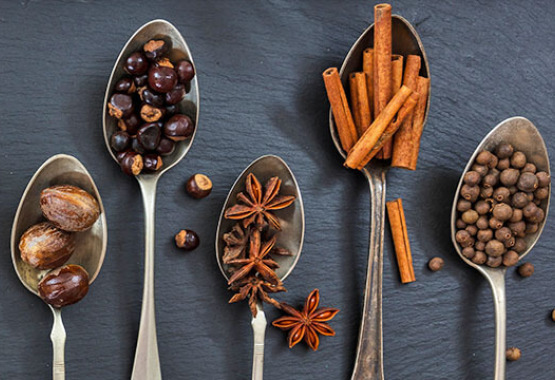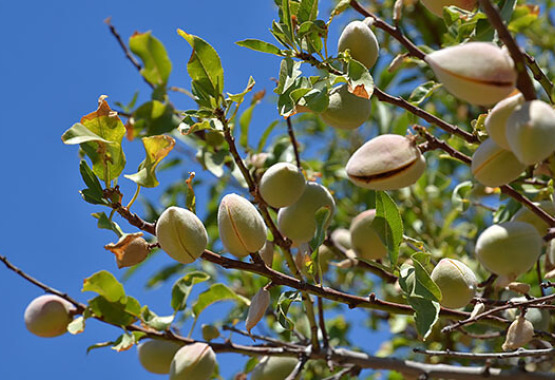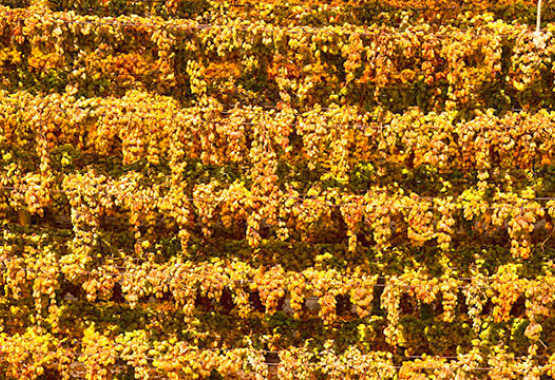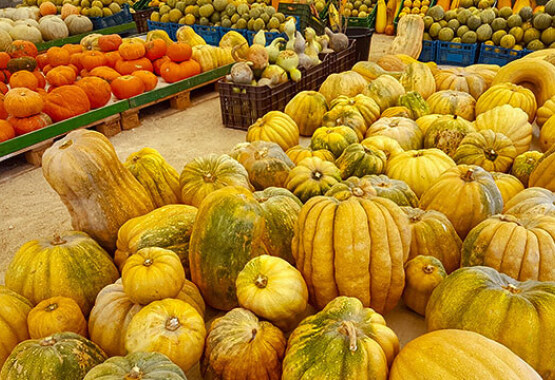
AROUND GREECE
So far, more than 100 Greek products have been registered as PDO: 33 wines, 20 cheeses, 19 olive oil varieties, 26 vegetables, fruit and pulses, 2 types of honey, the traditional avgotaracho (striped grey mullet fish roe) produced in Mesolongi [or Messolonghi] lagoon, Kozani crocus (Greek saffron exclusively produced in the Kozani region) and mastic from Chios Island, as well as mastic oil and gum. The list is an impressive one and it gets longer over time.
The followers of Dionysus (the god of winemaking) who were responsible for wine production were revered by all. During the Byzantine period, winemaking traditions continued. Wines were transported to the farthest reaches of the empire and beyond, becoming a cultural element of great importance.
Greeks viticulturists and wine producers respect these traditions and continue them with great care and diligence. A large number of Greek wines have received awards such as the Protected Designation of Origin (PDO). Thrace, Macedonia, Epirus, Thessaly, Attica, Peloponnese, Crete, the Ionian Islands and almost all of the Aegean Sea islands have their own PDO or GI wines. Old indigenous grape varieties and newer ones well acclimatized to Greek terrains produce top quality raw material for winemaking.
Corinth -the entire Peloponnese too- is considered the birthplace of this sweet and tasty product, which is used in traditional cooking and baking. ‘Black Corinth’ grapes are also grown on Zante Island where top quality PDO currants are produced.
- feta cheese, the Greek white cheese which is known the world over;
- formaela, the hard yellow cheese produced in Arachova village, Mt. Parnassos;
- metsovone, a smoked cheese made in Metsovo town, Epirus;
- sfela, a strong tasting white cheese from Mani, S. Peloponnese;
- San Michali, a yellow cheese prepared on Syros Island;
- katiki Domokou, a low fat soft white cheese made in Domokos area, Central Greece;
- xynomyzithra a soft white cheese from Crete;
- graviera, a hard yellow round cheese which comes in various types such as the one made on Mt. Agrafa area in Central Greece, on Naxos Island, and Crete;
- kalathaki, a white round medium hard cheese prepared on Limnos Island;
- ladotyri, a yellow round mature cheese produced on Lesvos Island;
- pichtogalo, a white cheese spread from Chania, Crete;
- kopanisti, a soft off-white cheese made on Cyclades Islands.
The list goes on and it’s absolutely worth finding out more about it, either at home or during your travels in Greece.
The Kozani crocus is a beautiful flower with bright purple colour, out of which the top quality Greek saffron is exclusively produced. The process of collecting, drying and standardizing this product is arduous and painstaking. The crocus stamens enhance the aroma, flavour and colour of our savoury and sweet dishes and they are believed to hold the secret of longevity. The Greek saffron’s antioxidant properties have secured the product a place in the super foods category.
Mastic trees are grown exclusively on the southern part of Chios Island and their resin has been proved to have beneficial properties both anti-cancer and anti-ageing.
Legumes have been cultivated in Greece since the antiquity. A type of bean called ‘vanilia’ grown in Feneos, Corinthia, Peloponnese is a PDO product, as is fava Santorinis, a variety of yellow split peas grown on Santorini Island.
Vegetables and fruits, too, have a strong presence in the Greek PDO family. Here are some of them:
- Tsakoniki aubergine, a variety grown in Leonidio area, Peloponnese;
- tomataki Santorinis, a small tomato grown on Santorini Island;
- portokalia Chanion, i.e. oranges from Maleme, Chania, Crete;
- aktinidio Spercheiou, a type of kiwi grown on Spercheios Valley, Central Greece;
- mila Zagoras Piliou, a type of red apple from Zagora Village, Mt Pelion, and firiki Piliou, a small apple also cultivated on Mt. Pelion;
- rodakina Naoussas, a fragrant type of peach grown in Naousa area, Central Macedonia.
The above tasty products and many more promise to offer you new experiences full of flavours and aromas on your next trip to Greece. Find out more about them!
Select protected designation of origin products
Greece is blessed with a healthy and mild climate. The land is fertile and its produce is of high nutritional value. The human geography particular to each site is closely connected to the high quality of many of these products so that they are each considered as that area’s best ambassadors. This is why these products have been awarded the Protected Designation of Origin (PDO) status by the European Union.So far, more than 100 Greek products have been registered as PDO: 33 wines, 20 cheeses, 19 olive oil varieties, 26 vegetables, fruit and pulses, 2 types of honey, the traditional avgotaracho (striped grey mullet fish roe) produced in Mesolongi [or Messolonghi] lagoon, Kozani crocus (Greek saffron exclusively produced in the Kozani region) and mastic from Chios Island, as well as mastic oil and gum. The list is an impressive one and it gets longer over time.
Greek Wine
Viniculture in Greece is older than legend - many stories have been created in order to extol wine. In Ancient Greece, it was customary to mark amphorae containing wine for commercial use with labels indicating the region of origin and the producer. Wine was a product of paramount importance for the ancient world, and certification of its place of origin was considered vital.The followers of Dionysus (the god of winemaking) who were responsible for wine production were revered by all. During the Byzantine period, winemaking traditions continued. Wines were transported to the farthest reaches of the empire and beyond, becoming a cultural element of great importance.
Greeks viticulturists and wine producers respect these traditions and continue them with great care and diligence. A large number of Greek wines have received awards such as the Protected Designation of Origin (PDO). Thrace, Macedonia, Epirus, Thessaly, Attica, Peloponnese, Crete, the Ionian Islands and almost all of the Aegean Sea islands have their own PDO or GI wines. Old indigenous grape varieties and newer ones well acclimatized to Greek terrains produce top quality raw material for winemaking.
Olive oil – the liquid gold
Olive oil is perhaps the most characteristic product of Greece; one that is present in every Greek kitchen. Top quality olive oil varieties have gained worldwide recognition. Among them, nineteen labels produced in the Greek countryside have Protected Designation of Origin status. Crete, Halkidiki, Kalamata, Lygourio, Laconia, Kefalonia, Olympia, Lesvos, Preveza, Rhodes, Thasos, Samos, Zante (Zakynthos) are all award-winners with a significant contribution to the country’s olive oil production and related culture.PDO Table Olives – The Caviar of the Poor
Table olives can be a very tasty dish with a strong taste, served as an appetizer, or used as a flavourful ingredient in Greek cooking. The famous Kalamata olives; the konservolia olives produced in Amfissa, Arta, Volos; the savoury throumpa (black wrinkled olives) of Thasos, Chios, and Crete; and the green olives from Halkidiki are all PDO products. Colour, size, texture, and flavour vary with each type of olive. Their high nutritional value matches their great taste.Raisins – a sun-dried nutritious delicacy
The Corinthian raisin (black currant) is one of the oldest products of the Greek land and modern nutrition science has proved its beneficial properties. After the harvest, grapes are spread on drying areas under the strong summer sun. The sunlight promotes dehydration while all the nutrients remain concentrated in the currant. This process leads to a food which is as delectable as it is nutritional.Corinth -the entire Peloponnese too- is considered the birthplace of this sweet and tasty product, which is used in traditional cooking and baking. ‘Black Corinth’ grapes are also grown on Zante Island where top quality PDO currants are produced.
Dairy products with a superior taste
The long tradition of animal husbandry in Greece is reflected in the high standard of its dairy products. Cheeses with a strong or mild flavour and fine aromas are the result of a masterful combination of ancient knowledge and practice. Twenty-odd types of cheese have so far been awarded the Protected Designation of Origin status; here is an indicative list:- feta cheese, the Greek white cheese which is known the world over;
- formaela, the hard yellow cheese produced in Arachova village, Mt. Parnassos;
- metsovone, a smoked cheese made in Metsovo town, Epirus;
- sfela, a strong tasting white cheese from Mani, S. Peloponnese;
- San Michali, a yellow cheese prepared on Syros Island;
- katiki Domokou, a low fat soft white cheese made in Domokos area, Central Greece;
- xynomyzithra a soft white cheese from Crete;
- graviera, a hard yellow round cheese which comes in various types such as the one made on Mt. Agrafa area in Central Greece, on Naxos Island, and Crete;
- kalathaki, a white round medium hard cheese prepared on Limnos Island;
- ladotyri, a yellow round mature cheese produced on Lesvos Island;
- pichtogalo, a white cheese spread from Chania, Crete;
- kopanisti, a soft off-white cheese made on Cyclades Islands.
The list goes on and it’s absolutely worth finding out more about it, either at home or during your travels in Greece.
Fruits, pulses, & flowers - gifts of the gods
The list of high quality produce grown in the Greek countryside includes species which are famous the world over for their nutritional value and uniqueness.The Kozani crocus is a beautiful flower with bright purple colour, out of which the top quality Greek saffron is exclusively produced. The process of collecting, drying and standardizing this product is arduous and painstaking. The crocus stamens enhance the aroma, flavour and colour of our savoury and sweet dishes and they are believed to hold the secret of longevity. The Greek saffron’s antioxidant properties have secured the product a place in the super foods category.
Mastic trees are grown exclusively on the southern part of Chios Island and their resin has been proved to have beneficial properties both anti-cancer and anti-ageing.
Legumes have been cultivated in Greece since the antiquity. A type of bean called ‘vanilia’ grown in Feneos, Corinthia, Peloponnese is a PDO product, as is fava Santorinis, a variety of yellow split peas grown on Santorini Island.
Vegetables and fruits, too, have a strong presence in the Greek PDO family. Here are some of them:
- Tsakoniki aubergine, a variety grown in Leonidio area, Peloponnese;
- tomataki Santorinis, a small tomato grown on Santorini Island;
- portokalia Chanion, i.e. oranges from Maleme, Chania, Crete;
- aktinidio Spercheiou, a type of kiwi grown on Spercheios Valley, Central Greece;
- mila Zagoras Piliou, a type of red apple from Zagora Village, Mt Pelion, and firiki Piliou, a small apple also cultivated on Mt. Pelion;
- rodakina Naoussas, a fragrant type of peach grown in Naousa area, Central Macedonia.
The above tasty products and many more promise to offer you new experiences full of flavours and aromas on your next trip to Greece. Find out more about them!




